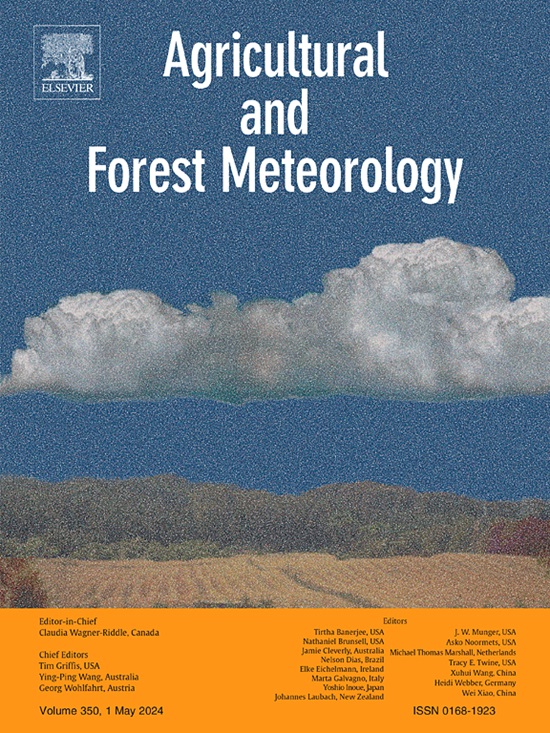Lower carbon uptake rates resulting from converting wooded Cerrado to pasture-dominated agricultural area in the Brazilian savanna
IF 5.6
1区 农林科学
Q1 AGRONOMY
引用次数: 0
Abstract
Agricultural expansion in the Brazilian Cerrado ecoregion has been causing extensive land use and land cover changes (LULCC), drastically shifting the carbon cycle dynamics of the affected ecosystems. However, accurate in situ observations of the net ecosystem exchange of carbon dioxide (NEE) from wooded Cerrado (Cerrado sensu stricto) as well as from post-conversion agricultural landscapes are lacking, with the limited amount of impact assessments in the literature being primarily based on remotely sensed data. This study presents a multi-annual time series of temporal high-resolution eddy covariance carbon dioxide fluxes, measured on the border between a wooded Cerrado and a post-conversion agricultural area, primarily used as a pasture, in southeastern Brazil. We investigated multiple setups of NEE partitioning methods to separate NEE into its components gross primary production (GPP) and total ecosystem respiration (TER). We combined these component partitioning models with source area partitioning methods to estimate component fluxes for the two contrasting ecosystems within the tower footprint. Model results were compared against remotely sensed vegetation indices and flux data from similar ecosystems. We found that converting native wooded Cerrado to a pasture-dominated agricultural area decreased the landscape’s NEE carbon (NEE-C) uptake by up to 494 g m-2 yr-1 (73 %). The wooded Cerrado had an annual cumulative NEE-C of -639 ± 20 g m-2 yr-1 and -673 ± 19 g m-2 yr-1 in 2019 and 2020, respectively. In comparison, the pasture had lower annual cumulative NEE-C of -146 ± 39 g m-2 yr-1 and -179 ± 38 g m-2 yr-1 in the same years. The pasture exhibited lower light use efficiency (LUE) and NEE-C uptake in the dry season, resulting in lower annual NEE-C uptake. Additionally, the pasture showed greater sensitivity to precipitation changes, leading to higher seasonal variations in carbon dioxide fluxes.
求助全文
约1分钟内获得全文
求助全文
来源期刊
CiteScore
10.30
自引率
9.70%
发文量
415
审稿时长
69 days
期刊介绍:
Agricultural and Forest Meteorology is an international journal for the publication of original articles and reviews on the inter-relationship between meteorology, agriculture, forestry, and natural ecosystems. Emphasis is on basic and applied scientific research relevant to practical problems in the field of plant and soil sciences, ecology and biogeochemistry as affected by weather as well as climate variability and change. Theoretical models should be tested against experimental data. Articles must appeal to an international audience. Special issues devoted to single topics are also published.
Typical topics include canopy micrometeorology (e.g. canopy radiation transfer, turbulence near the ground, evapotranspiration, energy balance, fluxes of trace gases), micrometeorological instrumentation (e.g., sensors for trace gases, flux measurement instruments, radiation measurement techniques), aerobiology (e.g. the dispersion of pollen, spores, insects and pesticides), biometeorology (e.g. the effect of weather and climate on plant distribution, crop yield, water-use efficiency, and plant phenology), forest-fire/weather interactions, and feedbacks from vegetation to weather and the climate system.

 求助内容:
求助内容: 应助结果提醒方式:
应助结果提醒方式:


